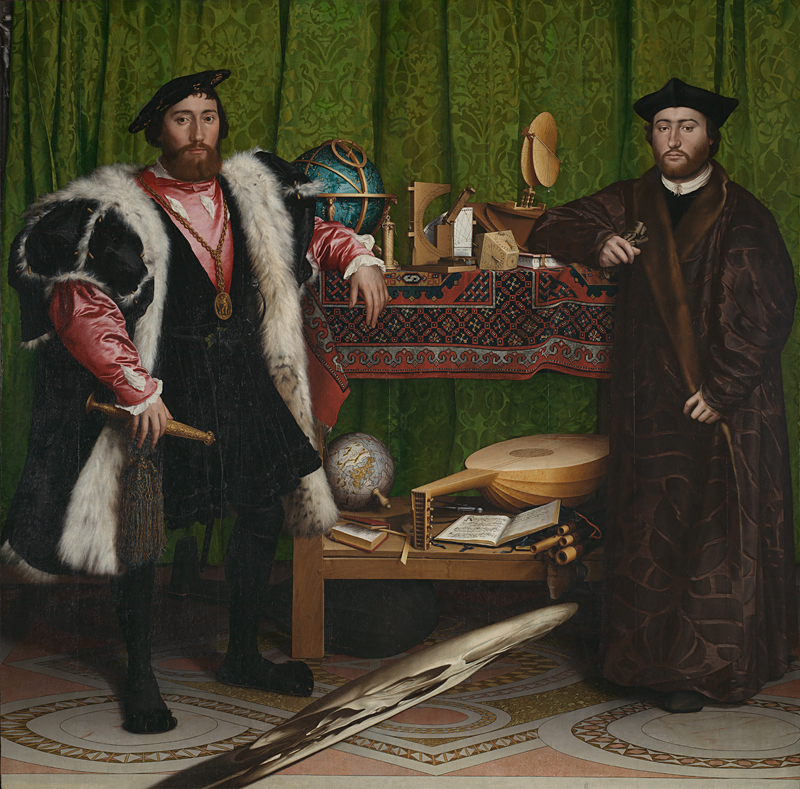We just met the best museum guard ever. He works at the National Gallery.

Yesterday we were enjoying a visit at the National Gallery in London. Covid has been a nightmare for museums, but it has offered us visitors the unprecedented possibility of wandering around in semi-deserted galleries, of being alone with a Leonardo da Vinci or a Caravaggio. Because this is the paradox of museums: the more successful they are, the worse your experience of them is, and the contrary is true.

We stopped in front of one of the masterworks of the National Gallery, The Ambassadors by
Hans Holbein the Younger. It's a wonderful painting full of symbols and with a striking deformed skull figure which immediately catches your attention. We were observing it at different angles (something you can't really do when the museum is crowded) when one of the museum invigilators approached us and started explaining with incredible enthusiasm how the painting was full of amazing perspective effects and from where you could best enjoy them.
The painting is strikingly different if seen from different angles, not only in the most obvious figure of the skull but also in many subtle details such as the feet or the table cloth. He brought us to all the exact spots where the different perspective details were more evident. He humorously described them as some sort of magic: "The perspective and the optical illusions bring it to life, you become part of it as from every different angle you look at it, it expands, and follows you and flips around! You two are lucky to see it together because if one of you had to explain the other how the entire painting changes based on your movements you would think the other one is crazy 😂". He made us appreciate nearly invisible details such as one of the lute strings being broken, and ended by saying "‘Everybody here wants a Leonardo, I’d just love to have this painting! This masterpiece makes you go beyond your brain…“.
His passion transformed our visit into a real "art experience", an unforgettable one for us. But in fact he was able to change his job into a much more creative one. He told us how, when he started working in the museum seven years before, as a simple security guard, he noticed that some visitors were paying a special attention to this painting, for reasons unknown to him.
So, instead of just ignoring the fact, he decided to ask a visitor who seemed very knowledgeable to explain him what was so special about that painting, and she brought him into the wonderful world of comprehension of the many meanings of an art masterwork, a gift he's still enjoying seven years later and sharing it with other visitors.
Museum guards are so often overlooked as cultural agents. Many museums (with some notable exceptions) treat them as just security guards, for example not offering them any art education course in their training. But security guards are often the first line in the relationship with visitors, and can make or break the whole experience. While we always remember rude or noisy ones, at the same time we are grateful to guards making the extra mile to help.
Because what our guard showed us and shared with us was the transformative power of art education, which should not be limited to certain roles but shared with everyone working in the museum. Guards, shop assistants, bartenders, cleaning staff, all should get cultural opportunities as well as a decent salary and good working conditions.
A museum should first of all be inclusive towards every member of its staff if it really wants to be inclusive with every member of its audience. Otherwise it's just empty rhetoric.





Comments